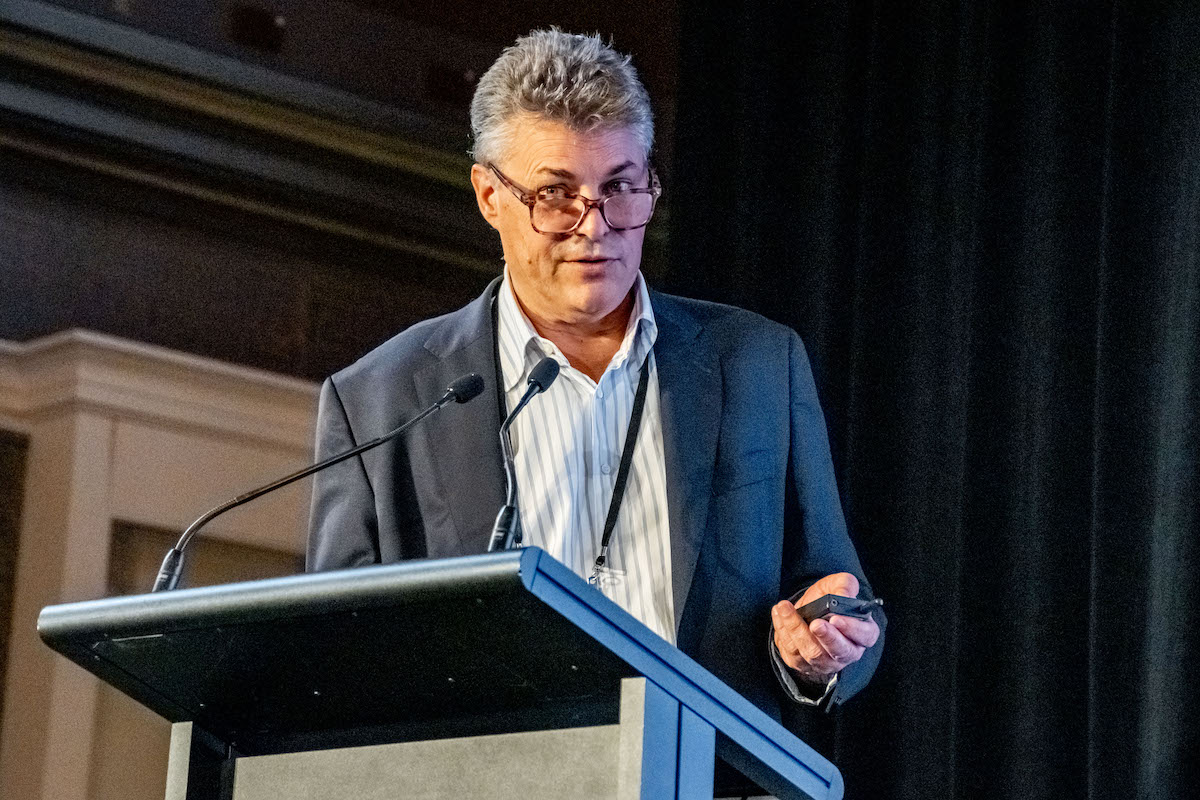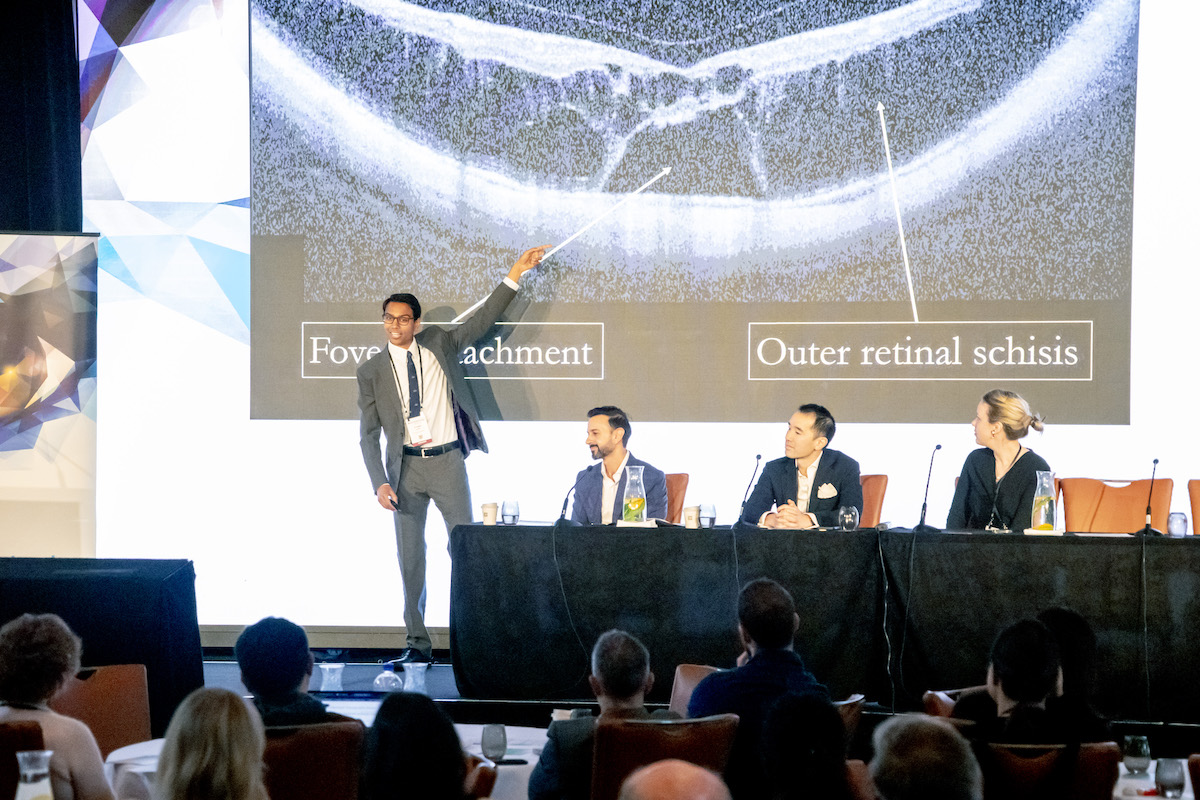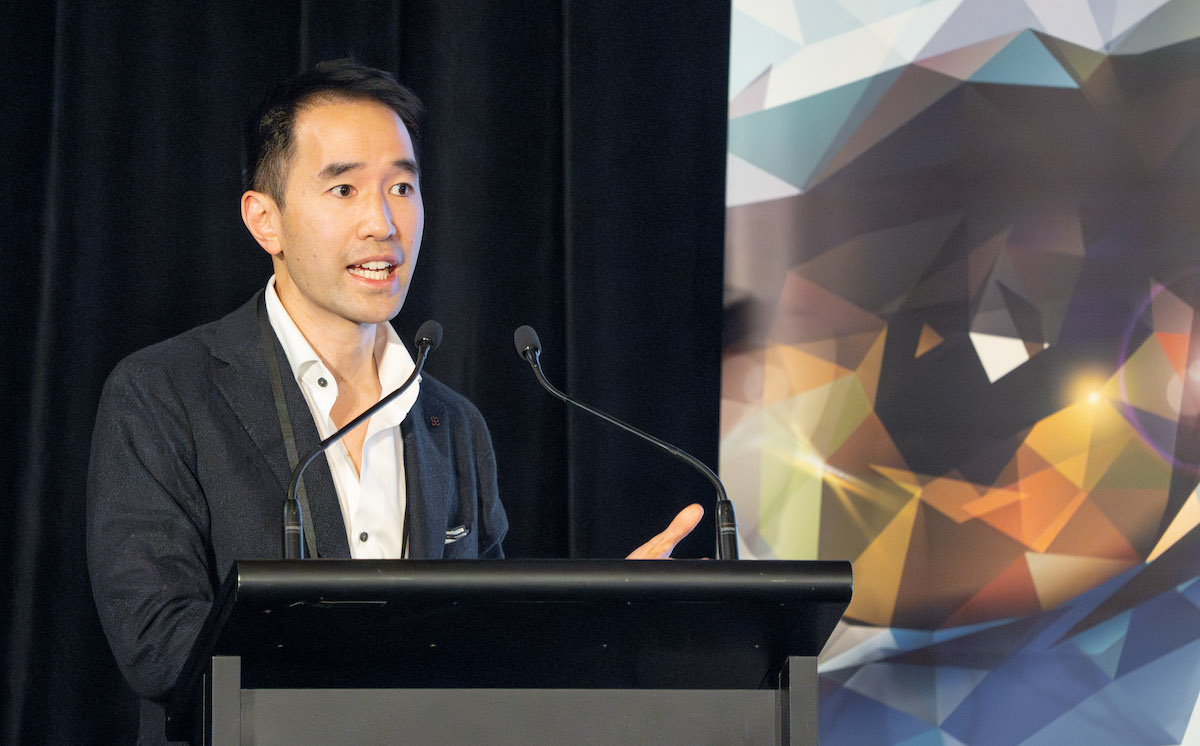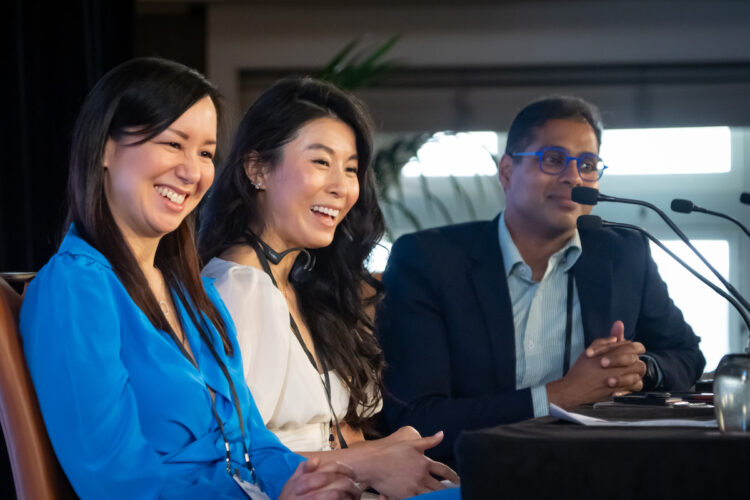Ophthalmology Updates! and its unique format are the ideal antidote to keep on top of an ophthalmic landscape being shaped advances in AI, geography atrophy and disease diagnosis, plus more.
Questions and dilemmas ophthalmologists will need to grapple with around artificial intelligence (AI) generated some of the liveliest debate at the recent Ophthalmology Updates! conference in Sydney.
So too did arguments over new versus legacy anti-VEGF injections for neovascular age-related macular degeneration (nAMD), two promising drugs for geographic atrophy (GA), and the potential of an Australian-developed saliva test for glaucoma.

Over a beautiful sunny weekend in Sydney 24-25 August, delegates from across Australia and New Zealand gathered at the iconic Fullerton Hotel for the annual conference. It’s a key opportunity to brush up on common subspecialty topics and learn about frontier issues while also leaving plenty of room for debate between the audience and presenters.
In 2024, attendees were treated to a dash of Hollywood Pizzazz, as the “Cataract Coach”, Dr Uday Devgan, returned to Australia to share his wisdom. Known for his dedication to teaching, with daily surgical videos uploaded online, Dr Devgan took the audience through numerous common and uncommon scenarios in cataract surgery.

Posterior capsule tears, traumatic cataract, white cataract and surgery in the setting of poor zonular support were all covered using examples from Dr Devgan’s extensive library of videos, all freely available at cataractcoach.com.
AI continues to draw increasing interest in ophthalmology and was a key focus of the meeting.
Professor Pearse Keane, Professor of Artificial Intelligence at University College London, took delegates on a journey from the historical development of AI to its current state-of-the-art, raising questions about the potential impact of the rapid advancement in this field on the practice of ophthalmology.
Community screening for common eye diseases, and accurate and efficient recruitment of patients to clinical trials are just a few areas that may benefit in coming years, he explained.

A panel discussion with Melbourne’s Professor Peter Van Wijngaarden delved into the many potential advantages, pitfalls and ethical issues in this area. How far do we trust AI in its current state? Who is responsible for errors made by AI? These are among many questions we will need to consider over time.
Prominent Australian glaucoma specialist Professor Jamie Craig shared interesting data from the PROGRESSA study. It revealed that glaucoma suspects with higher stiffness parameters and lower central corneal thickness are more likely to progress. Additionally, factors such as cardiovascular disease, low BMI (body mass index) and sleep apnoea may be linked to a greater risk of progression.

Prof Craig also detailed SightScore, a polygenic risk score for primary open angle glaucoma developed after years of research. This test which analyses a saliva sample, is currently available to clinicians (although not subsidised). It has the potential to identify individuals at highest risk for glaucoma, enabling clinicians to prioritise and target screening and monitoring more efficiently.
Meanwhile, Associate Professor Rishi Gupta from Halifax, Nova Scotia, Canada provided insightful talks on the interpretation of pigment epithelial detachments and management of primary intraocular lymphoma. His vitreoretinal surgery session with cases of intraocular foreign bodies was a stark reminder of the critical importance of wearing safety eyewear.

A/Prof Gupta put forth his best effort to win over the local audience as one half of two “great debates” with Associate Professor Hemal Mehta. These debates centred around: faricimab versus aflibercept for nAMD, and Syfovre versus Izervay for GA. In both cases audiences were reasonably divided.
Dr Andrea Ang, from the Lions Eye Institute, highlighted the lack of significant advancement in treating HSV keratitis since the Herpetic Eye Disease Study (HEDS) 30 years ago.
However, it remains a condition many clinicians find difficult to manage and her insights into use of steroids in HSV keratitis were valuable.

Many clinicians without expertise in cornea may have been wondering what in the world CAIRS was – and they were enlightened by Dr Ang’s clear summary of Corneal Allogenic Intrastromal Ring Segments for keratoconus.
Sydney-based Dr Loren Rose provided an update on ongoing advances with myopia management with particular relevance to optometrists.
Updates on the management of thyroid eye disease, choroidal haemangioma, and scleritis were provided by local specialists. Dr Darshi Ramanathan, a neurologist with a special interest in MOG-Antibody Associated Disease (MOGAD), bridged the gap between neurologists and ophthalmologists to improve understanding of this increasingly diagnosed condition.
After launching eight years ago – and missing a couple of years due to COVID – Ophthalmology Updates! continues to be an innovative, collegial and highly educational event on the conference calendar.

For event convenor Professor Adrian Fung, the opportunity to ask questions is valued most by delegates, with more than 200 people attending in 2024.
“The field of ophthalmology – and the subspecialities within it – changes fast. Treatment options have changed since Ophthalmology Updates! first started in 2016,” Prof Fung said.
“This event is an opportunity to learn from each other and share our real-world experiences. There is a lot of discussion on areas where there’s room for debate on the best way to manage patients.”

He said the conference model includes revision of a ‘common’ condition across a range of subspecialities, as well as exploration of a ‘frontier’ topic on a topical subject.
“With speakers presenting the newest data in their field, the event provides a yearly concentrated overview from experts on the latest diagnostic techniques and treatments across a range of subspecialties,” he said.
Details for Ophthalmology Updates! 2025 will be announced soon.
More reading
AUSCRS 2024 – a record-setting affair
Ophthalmology Updates! looks ahead of the curve
Glaucoma genetic test taken from mouth swab a step closer to the clinic in Australia




